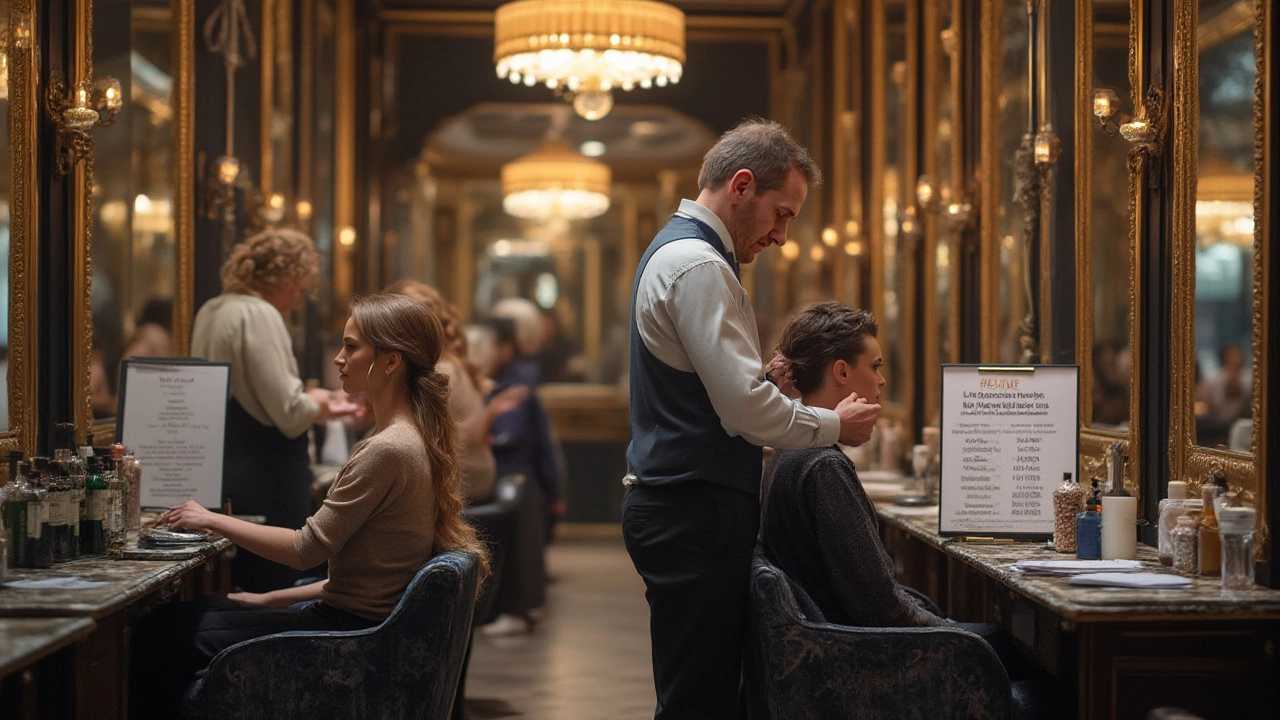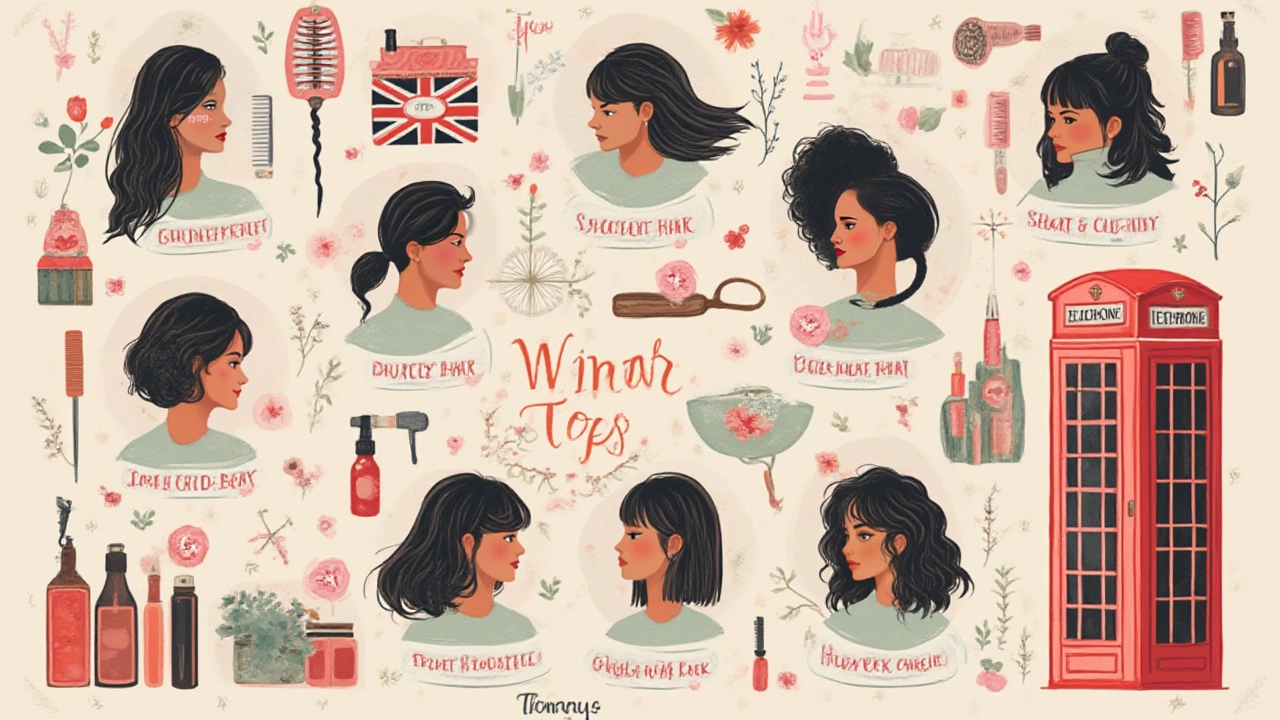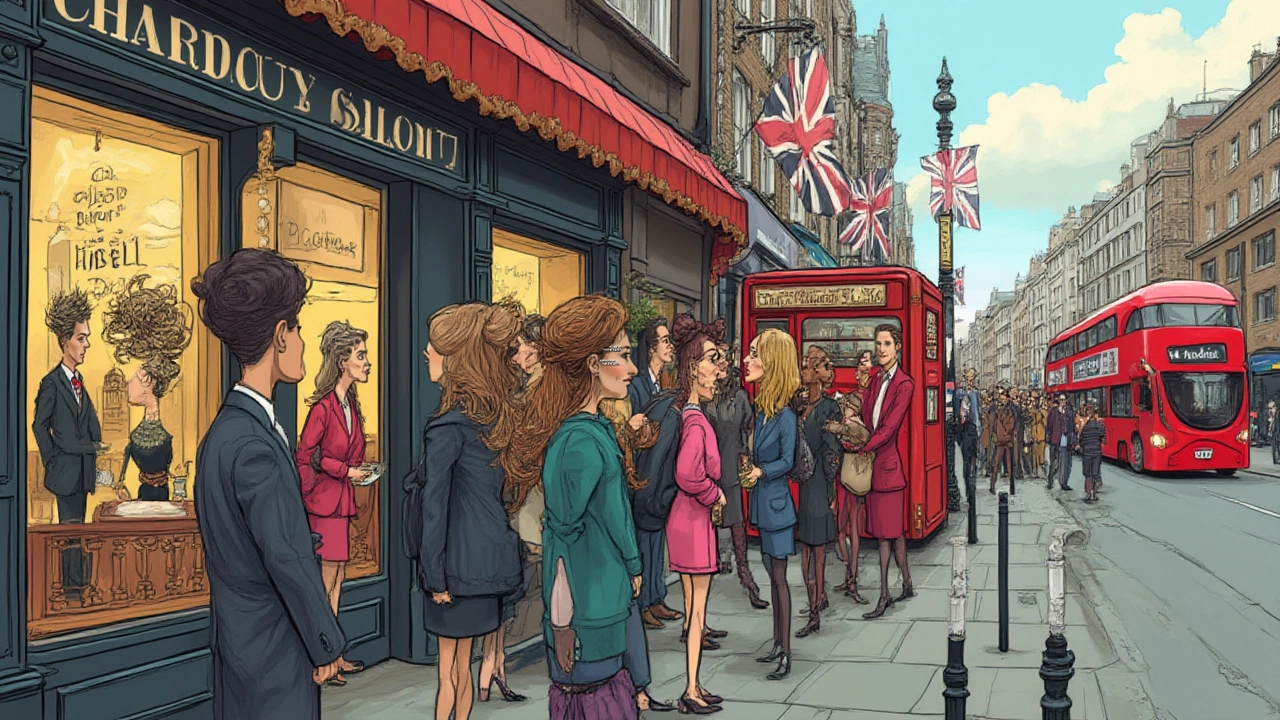Why Are Women’s Haircuts Expensive? Real Reasons Behind Salon Prices
 Jul, 13 2025
Jul, 13 2025
Ever sat in the salon chair, trying not to wince when you hear the total? Women everywhere trade memes about the mystery of women’s haircut prices: a simple trim can cost double (or triple) what guys pay for what looks like the same service. Here’s the thing—there’s more to those price tags than meets the eye, and the answer isn’t just “because they can.” Peel back the glossy salon posters and you’ll find a tangled web of economics, gendered expectations, business realities, and some downright shocking facts hiding in plain sight. Ready for some real talk?
The Cost Breakdown: What Are You Really Paying For?
First up, let’s lay out the numbers. According to a 2024 national beauty survey, the average price for a women’s basic haircut in the United States is $65, while men pay around $28. New York City and Los Angeles push those numbers higher (think $100 to $400 for a women’s cut at top salons—yes, seriously). Suburbs and smaller cities tend to sit below the average. What’s inflating those numbers?
Women’s haircut appointments usually block out more time, often 45 minutes to an hour, compared to 15-30 minutes for men. There’s also extra shampooing, sectioning, styling, blow-drying, and sometimes even a head massage. Even a “simple trim” might demand detailed layering or texturizing, and many stylists point out that longer or thicker hair means more work—and time is literally money for salons.
Check out this snapshot comparing average salon haircut durations and costs:
| Service | Average Duration (min) | US Avg. Price (2024) |
|---|---|---|
| Women’s Haircut | 50 | $65 |
| Men’s Haircut | 25 | $28 |
Now toss in overhead costs. Salons in prime locations face rents that can bite into profit. Add water charges (for all those head washes), energy bills from blow-dryers and straighteners, plus the cost of keeping up with licenses, insurance, and continuing education for stylists. Top-tier stylists often train for years and perfect their craft with costly courses (the International Salon & Spa Expo pegs the average annual education spend per stylist above $1,000). Those education costs usually factor (silently) into your final bill. The tools themselves? Scissors that actually work for advanced modern cuts can run over $500 a pair. Imagine a chef putting up with a $29 frying pan. That’s the salon equivalent of bargain-bin shears.
Then there’s the less visible stuff: salon hygiene standards mean towels are washed after every client, equipment is sanitized, and the lobby stays sparkling. Especially in a post-pandemic era, the cost of rigorous cleanliness—gloves, masks, sanitizers—really adds up. And let’s not pretend: the price of chic décor, high-grade lighting, and ambiance aimed at making you feel pampered also winds up in your bill, even if you’re just after a tidy-up.

Why the Gender Gap? Secret Salon Economics Revealed
Ready for the awkward truth? There’s no consistent, logical reason from a cost-of-supplies standpoint that women should pay more for a basic haircut than men with the same hair length. But pricing structures have more to do with cultural expectations than fairness.
Let’s look at what’s known as 'gender-based pricing.' This practice isn’t unique to salons—it shows up in dry cleaning, personal care, and even car insurance. The so-called “pink tax” is very real: a widely-cited 2015 report from the New York City Department of Consumer Affairs found women paid 13% more on average for personal care products and services, including haircuts. And as of 2025, not much has changed on this front.
Salons often justify higher prices for women's haircuts by citing greater complexity and styling demands. It’s true: a pixie cut with lots of layers is tricky business, but compare that to a guy’s modern undercut or a fade, and you’ll find the technical skill gap isn’t always gendered. So why stick with the double standards? A lot of it comes down to tradition, assumptions about women’s willingness to spend more, and the lingering old-school idea that “women’s styles” always mean more work.
Billed for more than just the cut, women are often nudged toward add-ons—ever been offered a “deep conditioning treatment” or “split-end therapy” before your trim starts? Many salons use these ancillary services to boost ticket size because basic haircuts aren’t super profitable on their own, especially with rising minimum wages and commercial rents. Upselling is the modern salon’s survival move, and women—conditioned to expect more maintenance—are easier targets for these extras.
Let’s be candid: stylists and owners know a premium women’s haircut is a precious commodity. They’re not just selling a service; they’re selling confidence, beauty, even social status. This marketing-magic blows up the baseline cost. Industry insiders say about 60%-70% of a typical high-end salon’s revenue comes from female clients—so if the salon trend curve is led by women, price inflation follows.

Smart Ways to Get More For Your Money
Feeling stung at the register doesn’t mean you’re powerless. There are savvy ways to cut costs without sacrificing style or confidence.
- Ask for a quote upfront. Don’t wait till the shampooing’s done to ask about price. Get clear on the cost before you sit down, and don’t be afraid to specify the service you want—no extras unless you ask for them.
- Request a “gender-neutral” cut.
- More salons now offer pricing based on hair length and complexity instead of gender. If your cut is quick and simple, point that out. Some places will happily cut the cost to keep your business.
- Try new talent.
- Established stylists charge more, predictably. But most reputable salons train up-and-coming stylists who are supervised closely and cost less. Many of these new pros are total perfectionists—think of every discount as a leap toward their glowing Yelp review.
- Skip the blowout.
- If you’re comfortable styling your hair at home, tell your stylist you want to air dry. Skipping the blowout or complicated finish usually knocks off $10-30.
- Be strategic with timing.
- Slow seasons—like midweek days after holidays—can mean deals. Salons may run special offers or happy hour pricing during less busy slots. Ask about discounts for students, teachers, or even birthdays.
- Go to beauty schools.
- If you’re open-minded and flexible, beauty school salons provide cuts at a fraction of salon prices. You’ll get a keen student and a watchful instructor for the price of coffee and a pastry.
- Join rewards programs.
- Loyalty points can add up. Many chains have free blowouts after a certain number of visits, or referral bonuses that knock dollars off both yours and a friend’s bill.
- Share with your stylist.
- Be honest: if your budget is tight, most stylists appreciate the heads-up and can help you prioritize what’s worth splurging on.
And if you’re curious about DIY, YouTube is crammed with haircutting tutorials, but take caution: one impulsive snip and you might find yourself shelling out even more for a rescue fix.
Here’s a fun fact: A 2023 survey by GlossGenius found 82% of women admit to having trimmed their own bangs at least once, but only 14% were happy with the result. Those emergency appointments? Yep, those cost extra.
| Money-Saving Tip | Potential Savings |
|---|---|
| Skip the blow-dry/style | $15 |
| Go to a new talent/stylist | 20-50% |
| Book during slow hours | 10-30% |
| Use beauty schools | 50-80% |
If you’re still wondering why things haven’t changed, salon owners argue that traditional pricing keeps their business afloat in a market driven by rising costs, social media trends, and fleeting fads. But with more awareness, more salons are switching over to gender-neutral, skill-based pricing—a move that’s both fair and overdue.
So, next time you’re stunned by the price tag, know you’re not alone—and you actually hold some cards, whether you’re negotiating, booking wisely, or shopping around. A little transparency—and a dash of confidence—goes a long way in the salon world.
